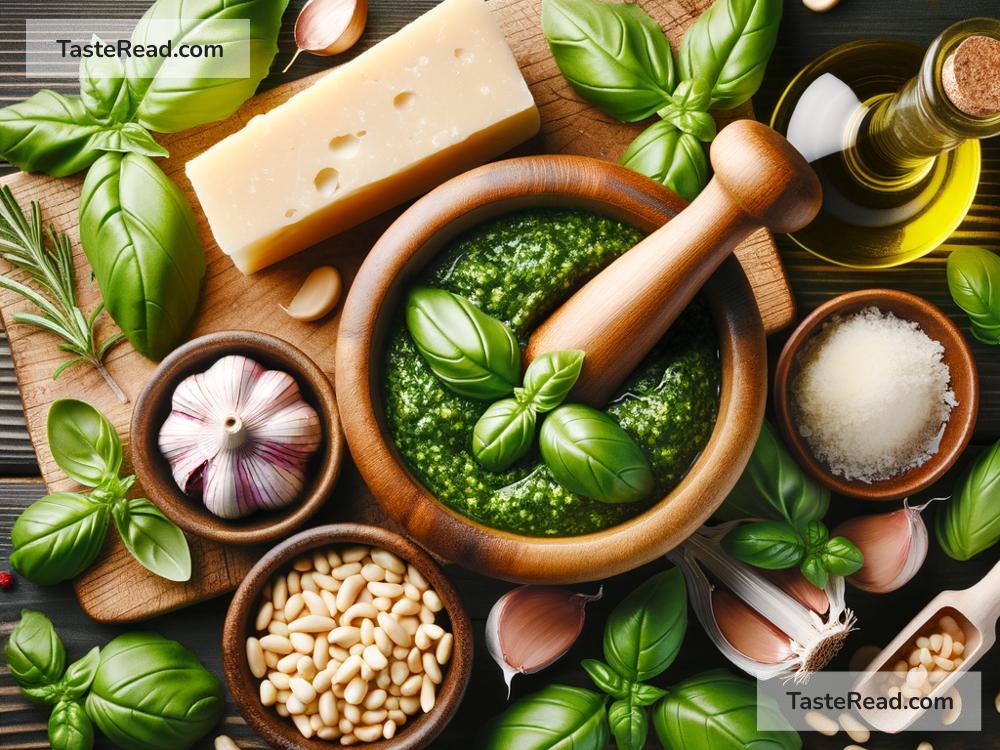How to Make Homemade Pesto: A Simple Guide
Do you love the rich, fresh taste of pesto? This Italian sauce is loved for its bold, herby flavor and versatility. Pesto can be used as a sauce for pasta, a spread for sandwiches, a dip, or even a topping for grilled meat and vegetables. The good news is that you don’t need fancy equipment or expert cooking skills to make pesto at home. It’s easy, fast, and tastes so much better when made fresh. In this blog post, we’ll guide you step-by-step on how to make homemade pesto using simple ingredients.
What Is Pesto?
Pesto is a savory sauce that originated in Italy, specifically in the Ligurian region. The word “pesto” comes from the Italian verb “pestare,” which means “to crush” or “to pound,” referring to the traditional method of making pesto with a mortar and pestle. Its classic recipe features fresh basil, garlic, pine nuts, Parmesan cheese, olive oil, and salt. Today, you can make pesto with modern tools like a food processor, and there are also countless variations of pesto with different ingredients.
Ingredients for Classic Basil Pesto
Here’s what you’ll need to make traditional homemade pesto:
- Fresh basil – 2 cups of basil leaves, lightly packed
- Garlic – 2 cloves (add more if you like a strong garlic flavor)
- Pine nuts – 1/4 cup (you can substitute walnuts or almonds if needed)
- Parmesan cheese – 1/2 cup, grated (or Pecorino cheese for a twist)
- Olive oil – 1/2 cup, extra virgin for the best flavor
- Salt – 1/2 teaspoon (adjust to taste)
- Lemon juice (optional) – 1 teaspoon to brighten the flavor
Note: This recipe makes about 1 cup of pesto. You can double it if you want more for later.
Tools You’ll Need
- A food processor, blender, or mortar and pestle
- A spatula or spoon
- Measuring cups and spoons
How to Make Homemade Pesto
Follow these simple steps to make pesto in just a few minutes:
1. Prepare Your Ingredients
Start by washing your fresh basil leaves in cold water. Gently pat them dry with a paper towel or kitchen cloth. Remove any tough stems, as you want the leaves to blend smoothly into the sauce. Peel your garlic cloves and set them aside.
2. Toast the Pine Nuts (Optional)
Pine nuts can be used raw, but toasting them adds a richer flavor. Heat a dry pan over medium heat and add the pine nuts. Stir them frequently for 2–3 minutes, or until they turn light golden and smell fragrant. Be careful not to burn them!
3. Combine Ingredients
In your food processor or blender, add the basil leaves, garlic, and toasted pine nuts. Pulse a few times to break them down. If you’re using a mortar and pestle, pound the garlic and nuts first, then gradually add the basil.
4. Add Cheese and Olive Oil
Next, add the grated Parmesan cheese and pulse again. Slowly drizzle in the olive oil while blending. Stop and scrape down the sides of the bowl with a spatula to make sure everything mixes evenly. Blend until the pesto looks smooth but still has a slightly chunky texture. You don’t want it to be pureed completely.
5. Season to Taste
Taste your pesto and add salt to suit your preference. If you want a brighter flavor, add a teaspoon of lemon juice. Blend briefly to combine.
6. Serve or Store
Your homemade pesto is ready! Use it immediately by tossing it with warm pasta, spreading it on bread, or spooning it over grilled food. If you’re not using it right away, transfer it to an airtight container. Pour a thin layer of olive oil on top to prevent browning and store it in the fridge for up to a week. You can also freeze pesto in ice cube trays for longer storage.
Tips for Perfect Pesto
- Use fresh ingredients. Fresher basil leaves and garlic make a big difference in the taste.
- Don’t overblend. Pesto should have some texture, so avoid blending it into a super-smooth puree.
- Experiment with flavors. Replace basil with spinach, kale, or arugula for a different twist. Add sun-dried tomatoes or roasted red peppers for unique variations.
Why Make Pesto at Home?
Homemade pesto is not only fresher and tastier than the store-bought kind, but it’s also more affordable. You can control the ingredients to suit your dietary preferences, like swapping pine nuts for a cheaper option or using less garlic. Plus, it’s a fun way to use up basil from your garden!
Final Thoughts
Making homemade pesto is rewarding and easy. With just a handful of ingredients and a food processor, you can whip up a flavorful sauce that’s perfect for so many dishes. Try this recipe for yourself, and don’t be afraid to get creative. Once you taste fresh pesto, you’ll never go back to the jarred version!
Enjoy cooking and bon appétit!


